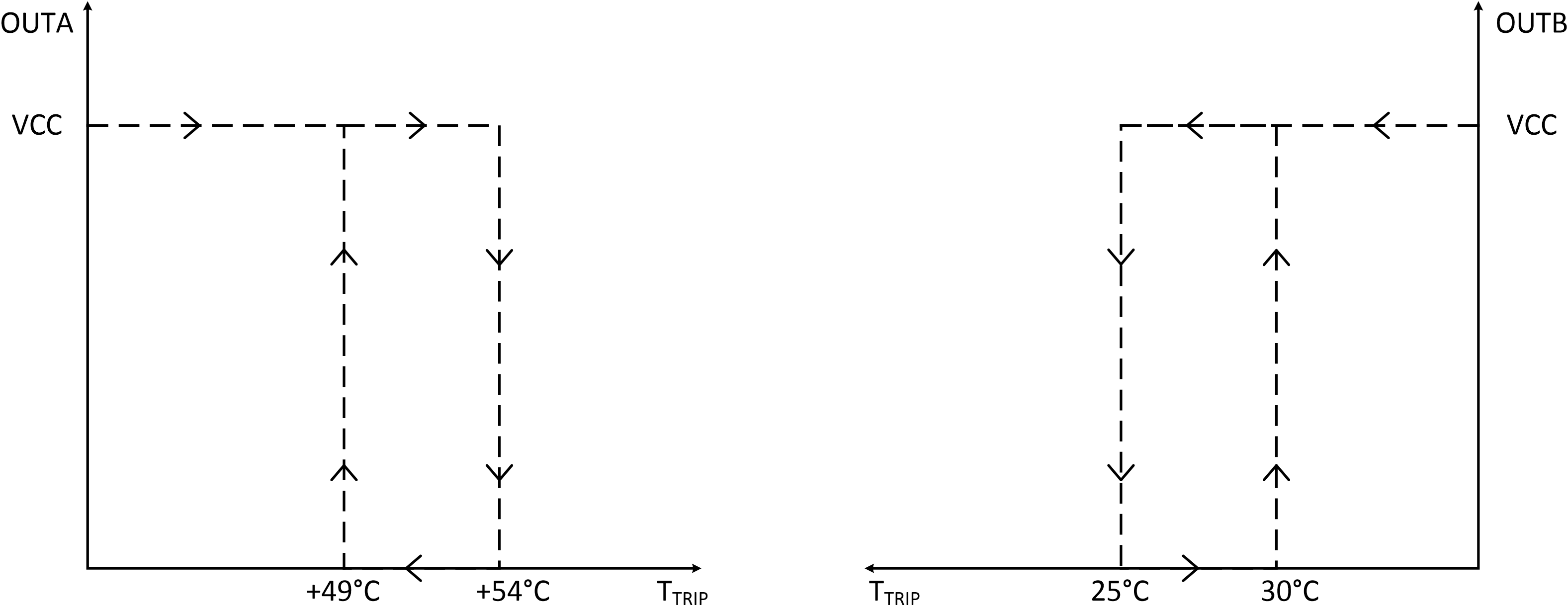SNIU033 May 2019
2.3 Dual-Channel Resistor Programmable Trip Points
The engineer can use two 1.05-kΩ to 909-kΩ E96-series resistors to set the high and low temperature trip points. There are 48 available trip points in the hot trip point range and 48 available trip points corresponding to a cold trip point and hysteresis setting. The hot trip point may be in the +30°C to +124°C range, while the cold trip point is in the –50°C to +25°C range. These settings can be found in the TMP390 device data sheet. On the TMP390EVM, resistors R3 and R5 are populated to set the trip points for SETA and SETB, respectively. These are located on the same breakout board where the TMP390 is located, and are designated as RSETA and RSETB. The resistor in the SETA programs the hot trip point, while the resistor in the SETB programs the cold trip point and the hysteresis settings for both channels. R3 is populated on the EVM with a 5.90-kΩ resistor, corresponding to the hot trip point at 54°C. R5 is 10.5 kΩ, corresponding to the cold trip point at 25°C and hysteresis of 5°C. With the trip point at 25°C, the user can immediately visualize the tripped output after opening the EVM. Two additional footprints for 0603 resistors, R4 and R6, are available to solder different resistors and program alternate hot and cold trip points. Remember that R3 and R4 should not be populated at the same time, and that R5 and R6 should also not be populated at the same time. Standard resistor values in the E96-series that have 1% tolerance should be used for best performance.
Figure 5 shows the behavior of the output using hysteresis. When the high trip point of +54°C is reached, OUTA is tripped and the output will remain low until the temperature drops below the hysteresis level subtracted from the hot threshold temperature. In this case, the hysteresis is set at 5°C, so OUTA returns high when the temperature drops to +49°C. The same goes for the lower threshold, which is set at +25°C. When the sensor goes to +25°C, OUTB goes low and will return high when the temperature rises above 30°C.
 Figure 5. Hysteresis Behavior Example
Figure 5. Hysteresis Behavior Example